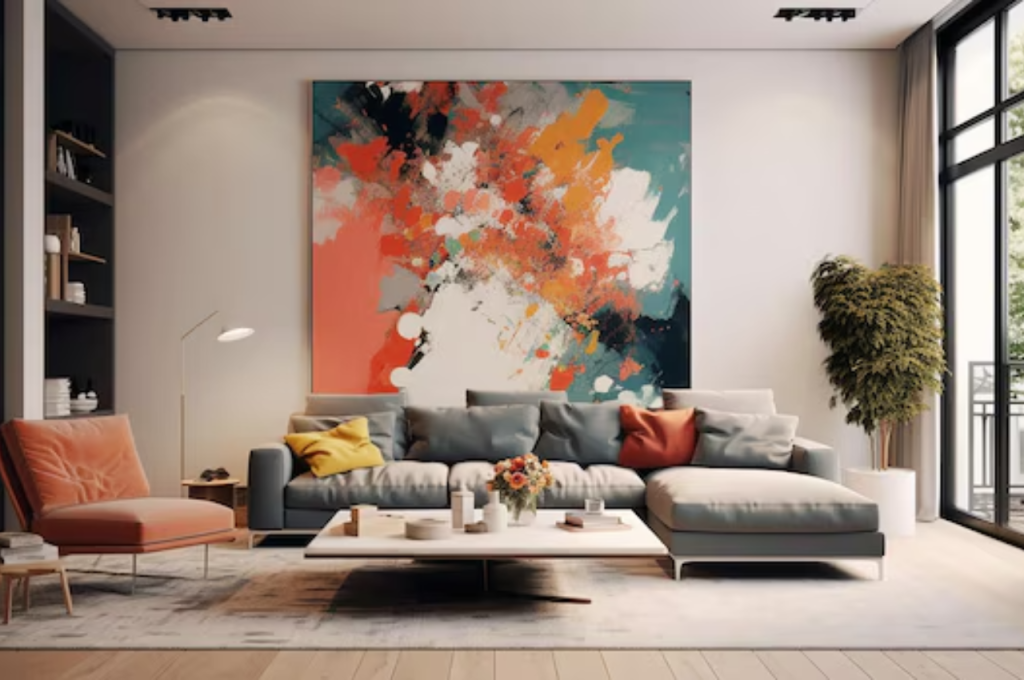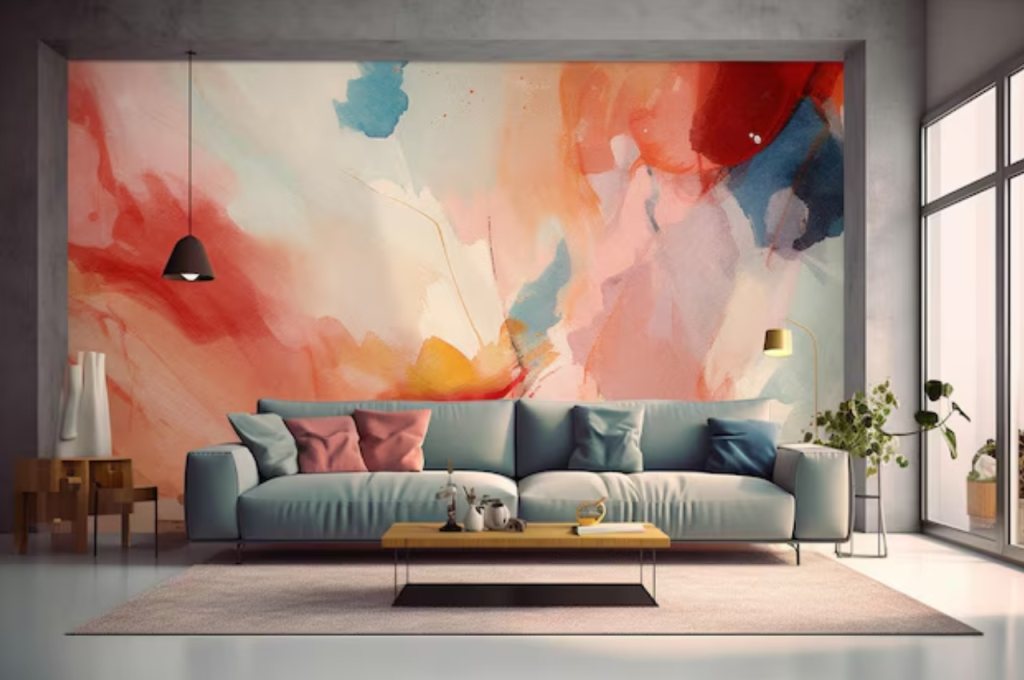Yes, painting walls is a skill that requires precision and technique. Mastering this skill takes practice and experience.
Painting walls may seem simple, but achieving a flawless finish often requires more than just a brush and paint. From proper preparation to the right brush strokes, a skilled painter knows the intricacies to ensure a professional outcome. Attention to detail, patience, and an eye for color coordination are essential traits for a successful wall painter.
Additionally, understanding the different types of paint and finishes is crucial to achieving the desired result. Developing these skills can lead to beautiful, long-lasting paint jobs that enhance any space.
The Art of Painting Walls
Painting walls is more than just a household chore, it’s an art form that can dramatically transform the look and feel of any space. Whether you’re refreshing a tired room or adding a pop of color to a new home, mastering the art of painting walls allows you to express your creativity and enhance your living environment.

Essential Skills for Successful Wall Painting
Before taking on the task of painting walls, it’s crucial to understand the essential skills required for successful execution.
- Surface Preparation: Properly preparing the wall surface is imperative for a flawless finish. This includes cleaning, repairing, and priming the walls as necessary.
- Attention to Detail: Paying attention to even the smallest details ensures a professional-looking outcome.
- Color Coordination: Understanding how different colors work together is essential for achieving the desired aesthetic appeal.
Importance of Proper Techniques
Employing the proper painting techniques is paramount for achieving a polished and enduring result.
- Correct Brushing and Rolling: Utilizing the appropriate brushes and rollers and implementing correct techniques substantially impacts the overall appearance.
- Consistent Coverage: Ensuring consistent paint coverage helps eliminate streaks or uneven patches.
- Drying Time: Adhering to proper drying times between coats is essential for achieving a long-lasting finish.
Choosing the Right Tools
When it comes to painting walls, having the right tools is crucial in achieving a professional finish. From selecting the right paint brushes and rollers to understanding different types of paints, each tool plays a significant role in the overall outcome. Let’s take a closer look at the key factors to consider when choosing the right tools for your painting project.
Selection of Paint Brushes and Rollers
Choosing the correct paint brushes and rollers is essential in ensuring smooth and even coverage. When it comes to paintbrushes, there are various options to choose from:
- Flat Brushes: Perfect for painting large areas like walls and ceilings. They provide quick and efficient coverage.
- Trim Brushes: These brushes have angled bristles that are ideal for precision work such as cutting along edges and corners.
- Sash Brushes: These brushes have a tapered shape, making them suitable for painting window sashes, trims, and other narrow areas.
On the other hand, selecting the right paint rollers can significantly impact the final result. Here are a few options to consider:
| Type | Surface | Benefits |
| Smooth Rollers | Flat surfaces | Deliver an even finish |
| Textured Rollers | Textured surfaces | Effectively cover bumps and imperfections |
| Foam Rollers | Smooth surfaces | Provide a flawless, streak-free finish |
Understanding Different Types of Paints
Before starting your painting project, it’s crucial to have a good understanding of the different types of paints available. Here are some common options:
- Emulsion Paint: Water-based and suitable for most interior walls. It dries quickly and is easy to clean.
- Oil-Based Paint: Ideal for surfaces that require durability, such as kitchen cabinets or doors. It offers a smooth, glossy finish.
- Primer: Used as a base coat to provide better adhesion and enhance the durability of the final paint layer.
- Chalk Paint: Popular for giving furniture a vintage, matte appearance. It requires minimal preparation and provides excellent coverage.
By understanding the characteristics of each paint type, you can make an informed decision based on the specific requirements of your project.
Choosing the right tools, including paint brushes, and rollers, and selecting the appropriate paint type, is essential for achieving a professional-looking paint job. Whether you are painting a small room or an entire house, investing time and effort in selecting the right tools will undoubtedly contribute to a successful and aesthetically pleasing result.
Preparation for Painting
Painting walls requires skill and preparation. From selecting the right paint to properly prepping the surface, attention to detail is key for a successful outcome. With the right techniques, anyone can become proficient in painting walls.
Surface Cleaning and Repair
Before you start painting your walls, it is essential to prepare the surfaces properly. Surface cleaning and repair are crucial steps that lay the foundation for a successful painting project.
Begin by cleaning the walls thoroughly to remove any dirt, dust, or grease. This ensures that the paint adheres properly and provides a smooth finish. Use a mild soap and water solution to clean the surfaces, and make sure to rinse off any residue.
If you notice any cracks, holes, or dents in the walls, it is vital to repair them before painting. Fill these imperfections using spackling compound or putty, and smoothen the surface with sandpaper once it dries. The goal is to create a seamless and even surface for the paint to adhere to.
Priming the Walls
Priming is an essential step that often gets overlooked but is crucial for achieving a professional-looking paint job. Priming the walls creates a smooth and uniform surface, enhances paint adhesion, and helps the paint color appear true to its shade.
Choose a high-quality primer suitable for your wall type, such as latex primer for drywall or oil-based primer for previously painted walls. Apply the primer evenly using a brush or roller, and make sure to cover the entire wall surface.
Allow the primer to dry completely before applying the paint. This drying time may vary depending on the specific product, so refer to the manufacturer’s instructions for guidance. Remember, patience is key to achieving a flawless finish.
Mastering the Technique
Mastering the technique of painting walls involves developing specific skills and techniques that can help elevate the overall look and feel of a room. From cutting in like a pro to rolling paint smoothly and evenly, there are various aspects to consider to achieve professional-looking results.

Cutting in Like A Pro
Cutting in is the process of carefully painting along the edges and corners of the walls, ensuring clean and precise lines where the wall meets the trim or ceiling. To master this technique, it’s important to use a high-quality angled brush and to practice steady hand movements to create seamless transitions between different surfaces.
Rolling Paint Smoothly and Evenly
Rolling paint onto the walls is a crucial part of the painting process, and achieving a smooth and even finish requires technique and skill. To accomplish this, it’s essential to start with a high-quality roller that is suitable for the type of paint being used. Additionally, maintaining consistent pressure while rolling and overlapping each stroke slightly helps to avoid streaks and uneven coverage.
Dealing With Common Challenges
Painting walls requires skill, patience, and attention to detail. Common challenges include achieving smooth coverage, avoiding drips and streaks, and blending colors seamlessly. Developing these skills takes practice and experience, but with the right techniques and tools, anyone can become proficient in painting walls.
Avoiding Drips and Splatters Achieving Clean Lines at Corners Avoiding Drips and Splatters
– Use an angled brush for the edges
– Keep paint consistency uniform
– Practice steady and even strokes
Achieving Clean Lines at Corners
1. Use painter’s tape as a guide
2. Remove the tape before the paint dries completely
3. Be patient and take your time In painting walls, skill is required to overcome challenges like drips and achieving clean lines at corners.
Prevent drips by mastering steady strokes and achieve clean lines by using painter’s tape diligently.
Advanced Tips and Tricks
Discover advanced tips and tricks for painting walls and learn if it’s truly a skill worth mastering. Uncover expert insights to elevate your painting techniques and achieve professional results effortlessly. Master the art of wall painting with innovative methods and unleash your creative flair.
Creating Faux Finishes
Enhance your walls with faux finishes. Use techniques like sponging, ragging, or dragging for a unique look.
Using Stencils and Patterns
Experiment with stencils and patterns to create intricate designs. Achieve geometric shapes or floral motifs effortlessly. Painting walls requires skills. Expanding your knowledge with these advanced tips will result in stunning transformations.
Finishing Touches
For a truly professional-looking and durable result, it’s essential to focus on the finishing touches when painting walls. This is where you can add texture, and depth, and seal the paint for long-lasting beauty.
Adding Texture and Depth
Adding texture and depth to your walls can elevate the aesthetic appeal of your space. Whether it’s using techniques like sponging, stippling, or rag rolling, or choosing a specialized textured paint, the added dimension can bring a unique style to your walls.
Sealing the Paint for Durability
After you’ve applied the perfect coat of paint, you need to ensure it lasts. It’s important to seal the paint to protect it from moisture, stains, and general wear and tear. This sealing process can also enhance the sheen and depth of the color, leaving your walls looking flawless for years to come.
Benefits of DIY Wall Painting
Is painting walls a skill? Yes, it is. But it’s not just a skill limited to professional painters. DIY wall painting can also be a rewarding and satisfying experience. There are several benefits to taking on this task yourself, including personal satisfaction and creative expression, as well as cost savings and the ability to customize your space.
Personal Satisfaction and Creative Expression
One of the greatest benefits of DIY wall painting is the personal satisfaction you can derive from it. There is something truly fulfilling about transforming a plain wall into a work of art through your efforts. Whether you opt for a simple solid color or venture into more intricate designs, every stroke of the brush allows you to manifest your creativity and leave your mark on your space. It’s a chance to unleash your imagination and create a living environment that reflects your unique personality.
Cost Savings and Customization
When it comes to cost savings, DIY wall painting has a clear advantage over hiring professionals. By painting your walls yourself, you can avoid the hefty price tag that often comes with hiring a painting contractor. The materials required, including paint, brushes, and rollers, are relatively inexpensive and easily accessible.

In addition to the cost savings, DIY wall painting also offers you the opportunity to customize your space according to your taste and preferences. You can choose the exact shade of color that matches your vision, mix and match different colors for a unique look or experiment with different painting techniques to add texture and depth to your walls. This level of customization allows you to create a living space that truly feels like home.
| Benefits of DIY Wall Painting: |
| Personal satisfaction and creative expression |
| Cost savings and customization |
Painting walls is not only a skill reserved for professionals. Engaging in DIY wall painting can provide you with personal satisfaction, allowing you to express your creativity and leave your mark on your living space. Moreover, it offers cost savings and the opportunity to customize your surroundings to fit your unique style and preferences. So why not pick up a brush and embark on your DIY wall painting adventure?
Conclusion
Painting walls is indeed a skill that requires practice and patience. Whether you’re a professional or a DIY enthusiast, honing this skill can lead to a beautifully transformed space. With the right techniques and tools, anyone can learn to paint walls with precision and finesse.
So, why not start practicing today?

